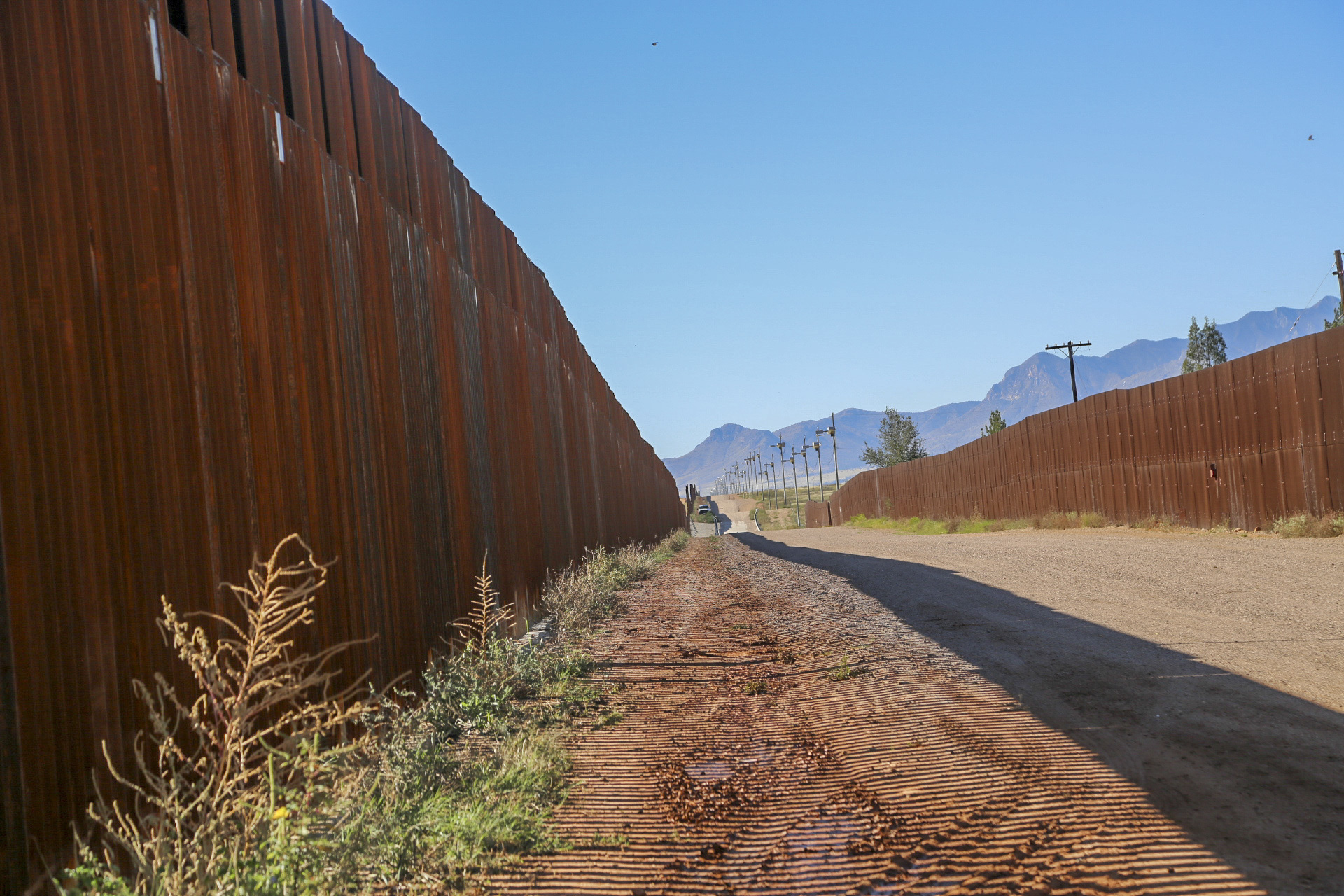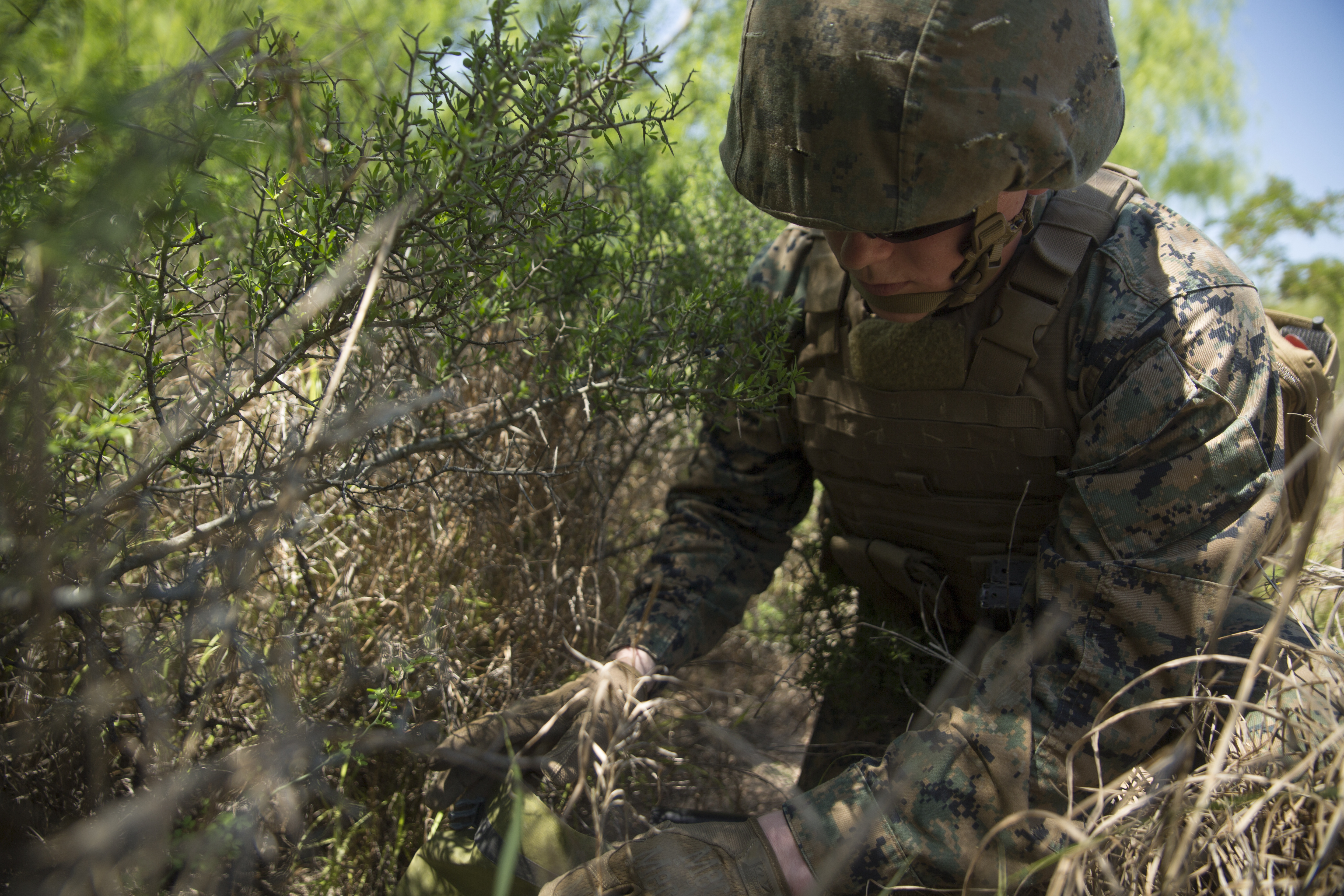
SAN DIEGO, Calif. — A contingent of active-duty Marines deployed this week to the California-Mexico border to join the growing border support mission ordered by the Trump administration.
The about 1,100 Marines tapped for the mission are assigned to Special-Purpose Marine Air-Ground Task Force 7 from the Camp Pendleton, Calif.-based I Marine Expeditionary Force, according to U.S. Northern Command. NORTHCOM is overseeing the military support to the U.S.-Mexico border mission for the Department of Homeland Security and U.S. Customs and Border Protection.
“There are currently more than 5,600 personnel deployed in support of Customs and Border Protection,” NORTHCOM officials said in a Thursday statement. “The number will fluctuate as more units and personnel deploy into the operating area. DoD anticipates more than 7,000 active duty troops will be supporting CBP.”
“Military personnel will provide a range of support including planning assistance, engineering support (temporary barriers, barricades, and fencing), fixed and rotary wing aviation support, medical teams, command and control facilities, temporary housing for Customs and Border Protection personnel and personal protective equipment for CBP personnel,” according to I MEF officials.
The latest military deployment orders for the mission along the Southwest border came in a presidential response to the movement north through Mexico of caravans of Central American migrants intent on requesting asylum in the United States.
On Thursday, a group of Marines set out heavy machinery and wire along the border near San Diego, bolstering security along some stretches of existing border walls. “We are hardening, if you will, the fence here, putting up concertina wire to make that wall less scalable,“ a SPMAGTF-7 spokesman, 2nd Lt. Frederick Walker, told the San Diego Union-Tribune.
The task force is providing the federal agencies with “planning assistance, engineering support (temporary barriers, barricades, and fencing), fixed and rotary wing aviation support to move CBP personnel, medical teams to triage, treat and prepare for commercial transport of patients, command and control facilities, temporary housing for CBP personnel and personal protective equipment for CBP personnel,” Walker said in an email to USNI News on Friday.

The Marines joined several hundred California National Guard soldiers in the mission, which includes 1,300 active-duty troops assigned in California, 1,500 in Arizona and 2,800 in Texas, according to NORTHCOM’s most-recent tally. “DOD has a long history of support for DHS and CBP in their mission to secure the U.S. border. All units supporting USNORTHCOM’s mission to support CBP will adhere to authorities, law and policy,” according to NORTHCOM. Marine Corps and Navy bases in Southern California have been designated to support the border mission.
The deployment to the U.S.-Mexico border isn’t new to Marines, who have participated in federal missions along the border for several years. Earlier this year, Marines with 2nd Ground Sensor Platoon from Camp Lejeune, N.C., deployed to southern Texas on a counter-drug surveillance mission for Joint Task Force North. In 2016, ground sensor platoons worked with the U.S. Border Patrol in Texas emplacing sensors to help detect and monitor illicit drug and human trafficking. Marines with 2nd Intelligence Battalion’s ground sensor platoon did similar work during a 2011 deployment.





